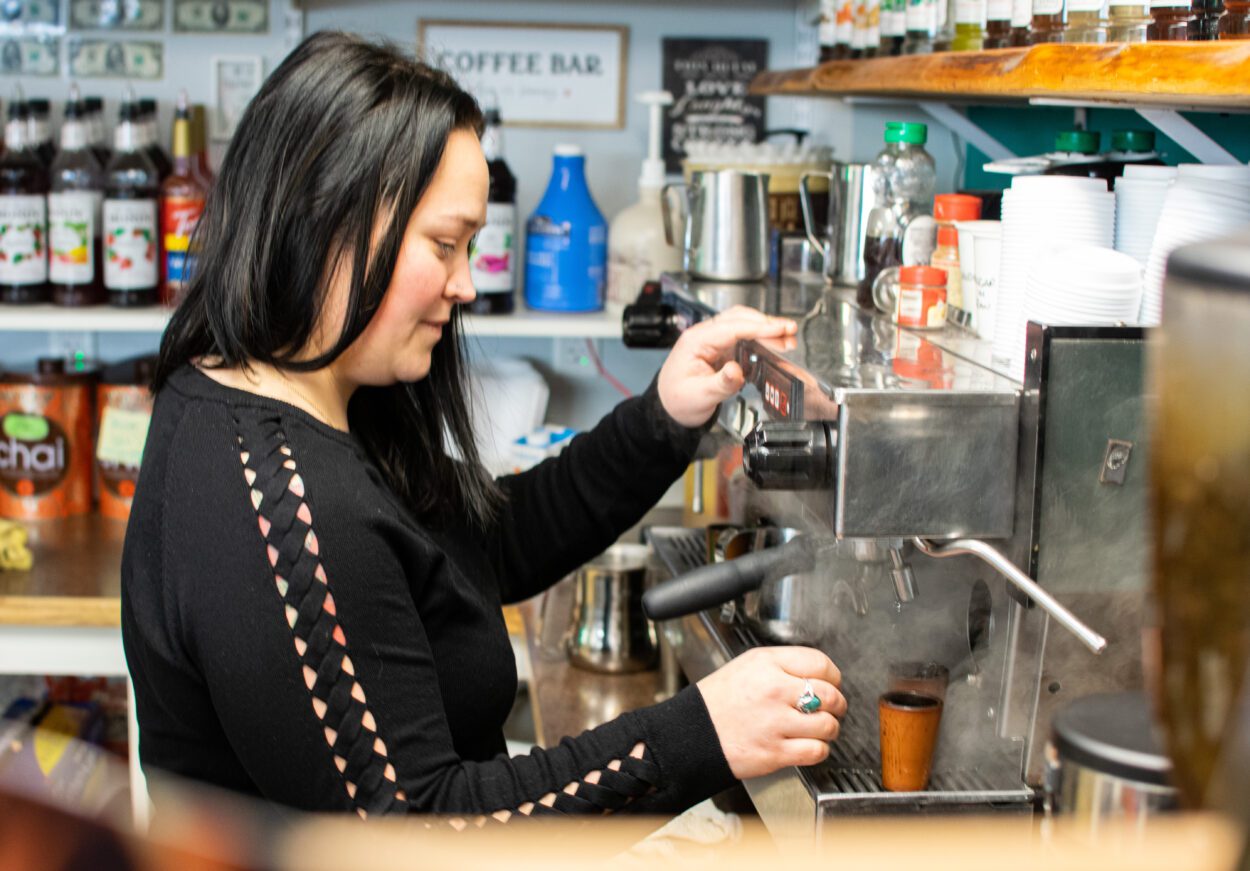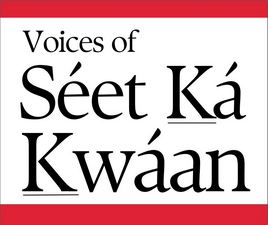
(Photo by Shelby Herbert/KFSK)
Cruise tourism is on the rebound in Petersburg, with this year’s number of tour boats, 110, approaching the town’s record season, 153, which was set in 2007. The industry is building back from the COVID-19 pandemic and the 2008 financial crisis, and local restaurateurs are enjoying the extra business. However, it’s a double-edged sword for those who are having trouble keeping up with demand.
For CoastAlaska’s Tourism Today series, KFSK’s Shelby Herbert took a look at how more visitors are putting pressure on Petersburg’s supply chain.
Guylynn Etcher was foaming milk for a latte at a coffee shop in Petersburg. She’s the owner of Glacier Express Cafe on the town’s main drag. The spot is known for hot drinks and homemade burritos that sell out fast. It’s located right across from the town’s north harbor, and attracts a lot of tourists. Etcher said her business enjoyed a very profitable summer.
“Actually, this summer was the best summer that I’ve seen […] since COVID,” said Etcher. “I feel like the first year or two were pretty awful, but I feel like since then, it’s been really good in the summer.”
But in the off-season, things are starkly different. Local customers aren’t numerous enough to sustain the cafe. Etcher said it’s a struggle to even keep the lights on in the winter.
“A lot of people leave during the winter time, but like there’s still bills to pay,” said Etcher. “And it’d be hard to close, because I would still have to pay rent. I’d still have to pay utilities. Like, the bills don’t stop, even if you’ve closed your doors for a couple of months.”
Etcher is fighting to make sure her business can stay open in the slow months. But she says it’s hard.
“I reduced hours earlier this year than I normally do,” said Etcher. “So, in December and January, I usually close on Sundays. [But] this year, I decided to close on Sundays a lot earlier.”
But not everybody in town feels the same way about increased tourism. Ryan Naylor is researching tourism in Southeast Alaska for his doctorate at Penn State. He’s visited Petersburg several times the last few years to collect perspectives from locals on the issue.
When Naylor reported his findings to Petersburg’s Assembly this spring, he said that the majority of Petersburg residents he polled said they don’t want to cave to tourism.
“The types of tourism that are happening here within Southeast Alaska are expected to only occur and grow exponentially within more northern communities,” said Naylor. “I understand that these communities are very much key examples of what Petersburg doesn’t necessarily want to be. The biggest quote that I would consistently hear is: ‘We don’t want to be Juno, Sitka, Skagway or Ketchikan.'”
And while the “on” season brings a lot of money into town, not every business is ready for the traffic. When Glacier Cafe can’t lock down the supplies they need to make their popular burritos, Etcher says she loses business and trust with locals.
“If it doesn’t come in the next week and I get it the day after my next week’s order time, I’m SOL,” said Etcher. “Because then I have to tell people, ‘I’m sorry, I’m out until next week.’ Which really sucks. That has gotten worse over the years.”
The shortage starts somewhere at the top — Petersburg’s main food distributors experience frequent supply chain disruptions during the peak months.
Hammer and Wikan is Petersburg’s largest grocery store. Jim Floyd is its CEO. He says the dynamic between grocers and restaurants in rural Alaska is a lot different from how it works in the Lower 48 — they’re not strictly competitors.
“They’re actually our customers,” said Floyd. “They’re our friends.”
Hammer and Wikan actually supplies most of the restaurants in town — including Glacier Express. But some of their interests are in conflict, sometimes. While visitors are critical to Petersburg’s restaurateurs, Floyd’s main customers are locals.
“The people who are in here day in and day out are our bread and butter,” said Floyd. “So what’s important to them is very important to us.”
And keeping all the products they need in stock during the peak months can be a challenge for Hammer and Wikan. Floyd says that’s for several reasons — their labor shortage and a lack of storage space, among them. But it’s especially hard to keep up when passengers and crew come down from the cruise ships and wipe out their shelves.
“If we’re not prepared for that, it affects everybody,” said Floyd. “Like there was a while when we couldn’t get vinegar — which is a huge staple for the Norwegian community, actually.”
Floyd says the extra summer traffic means that if they’re shorted some product or make a mistake in an order, they run the risk of losing business. And the accelerating demand is hard to predict.
“Even though we buy extra and make sure we have it on hand, we still do run out,” said Floyd.
Floyd says Hammer and Wikan struggled to stay on top of demand this year. But he appreciates the extra business and says his team will do their best to ride the wave as it comes.
“We’re never going to turn it away, because it’s money — it’s dollars and stuff,” said Floyd. “They do a lot to invest into the community. So it’s important to know that though there’s some people that don’t appreciate tourism — guess what? It all comes back and it supports us all.”
They can’t perfectly predict what they’ll need at any given time — Floyd says he doesn’t have a crystal ball. But his team keeps a close eye on their best selling items.
“The biggest commodities are frozen — like pizzas,” said Floyd. “We do a good job keeping those pizzas in stock. And ice cream, of course, because Alaskans love their ice cream!”
In the meantime, the company is trying to keep up with the velocity by expanding its refrigeration units. That’s so Petersburg shoppers — especially its ice cream lovers — might not get left out in the cold.











